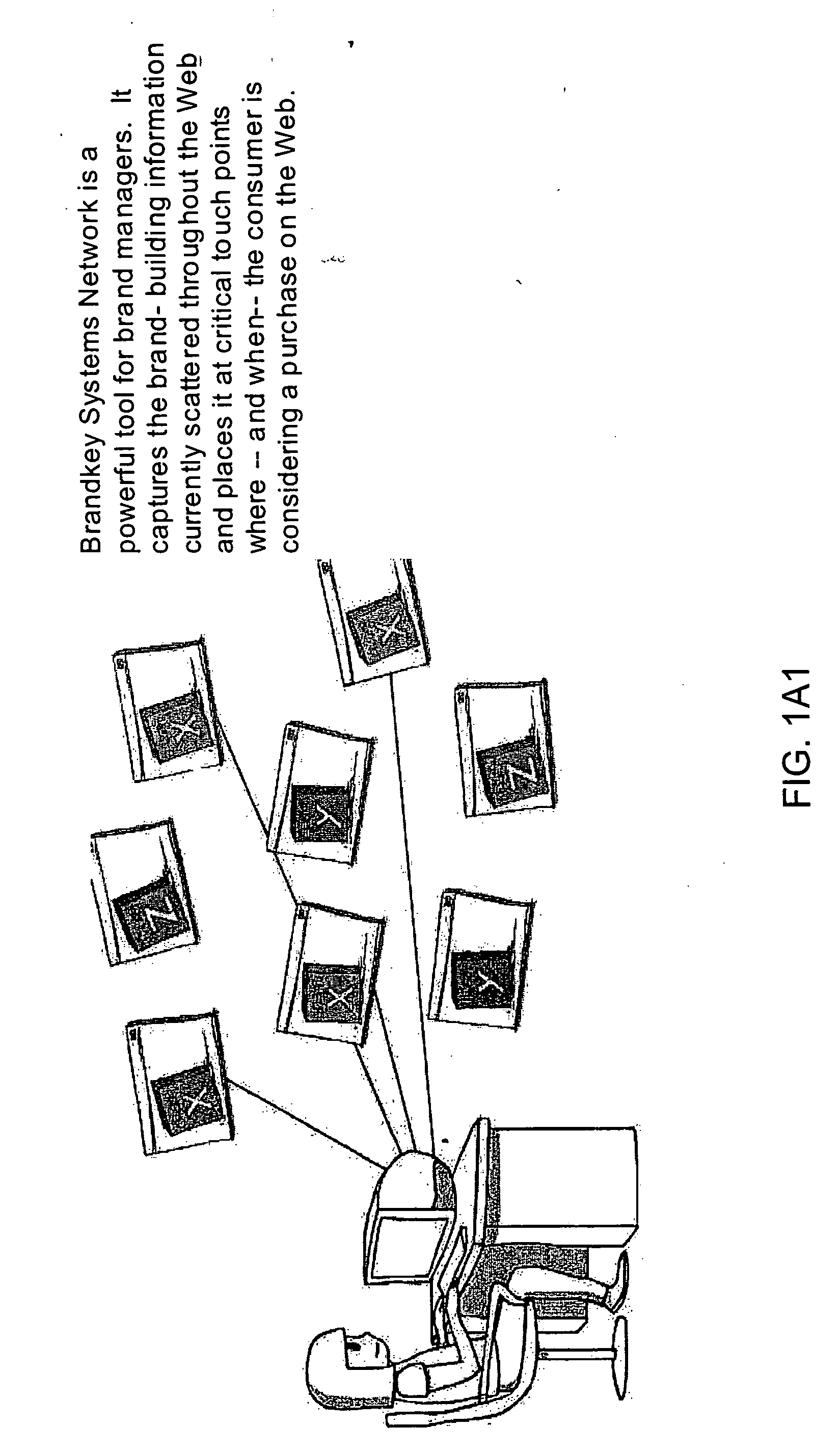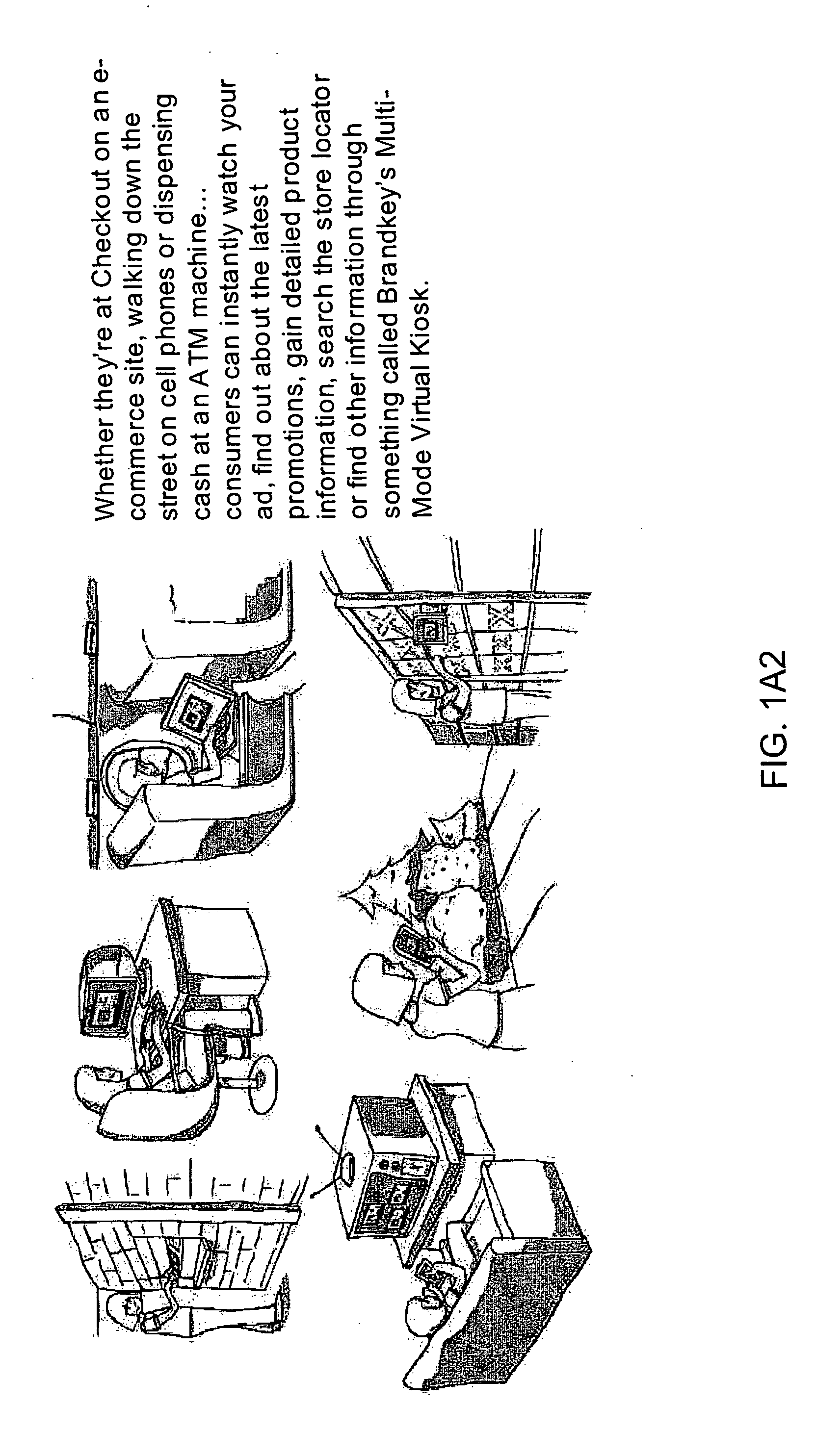Presently, an enormous amount of time, money and effort is expended daily by thousands of manufacturers and retailers to market, brand, advertise and sell their products and services to consumers in both regional and global markets.
While the above-described supply-chain
information management and delivery systems and services collectively cooperate to optimize the process of moving raw materials into finished products and into the hands of consumers, such supply-
side information systems fail to address the
information needs of the consumers of retail products who require and desire product-related information prior to, as well as after, the purchase of
consumer-products.
Moreover, such systems and services fail altogether to address the problems facing manufacturer marketing, brand and product managers, and their advertising and promotion agents, as well as retailer marketing and product managers and their advertising and promotion agents working along the demand-side of the retail chain.
However no one has yet found online tools that capitalize on
the Internet's interactivity, and allow marketers to communicate powerful, consistent brand messages and images to shoppers throughout the web.
Solutions remain elusive because marketers have a complex set of online needs.
Unfortunately,
the Internet's built-in frictions between brand managers and their trading partners often prevent this important
collaboration from taking place.
Because e-tailers control the amount of space and type of information the
consumer views on the e-
tail site, brand managers cannot present a unique brand experience to shoppers at
the Internet's most critical points-of-sale.
E-tailers may also discourage links to a brand's own Website that provide a shopper with more in-depth information, because they may risk losing the sale when the shopper leaves their sites.
Finally, the retailer's multi-channel strategy, which caters to consumers whether they are shopping online or offline in traditional retail stores, works against the interests of pureplay e-tailers.
These e-tailers receive the online traffic, but may lose sales to
brick-and-
mortar retail stores.
Communication among trading partners is poor.
Consumers may receive conflicting promotional offers from different agents, and resellers may receive outdated pricing about various products.
Worse, the marketing industry lacks the dedicated technology to connect the brand manager, e-tailer and other
online trading partners in a collectively beneficial network that would facilitate comprehensive changes in marketing campaigns.
Another difficult challenge brand managers face is communicating with the Internet's price-driven, task-oriented shopper who has long since tuned out the
clutter and
noise in the Internet marketplace.
Unfortunately, shopping
cart abandonment continues to be one of the most enduring problems facing e-tailers and brand managers, with unfinished online transactions projected to reach an estimated $6.3 billion in losses in 2004.
Clearly, the Internet still lacks the compelling shopping experiences that would make an impatient
consumer feel a product was worth the hassle of following the checkout process through to purchase.
These shopping tools convert brands to commodities and inhibit the marketer's brand building efforts with consumers on the Internet.
To build a strong brand presence, consumers must receive consistent messages and images about a brand, and this is extremely difficult for brand managers to control on the Web.
As a result, consumers often receive conflicting promotional offers from different agents, and resellers may receive outdated pricing about various products.
The Internet's built-in friction between brand managers and their trading partners compounds their difficulties.
E-tailers control the amount of space and type of information the consumer views on the e-
tail site, and brand managers cannot present a unique brand experience to shoppers at the
point of sale.
Consumers have
limited access to the information they seek before
purchasing certain products on these sites, but e-tailers frequently also discourage links to a brand's own with in-depth information, because they may lose the sale when the shopper leaves their site.
Finally, the retailer's multi-channel strategy, which encourages the shopper to buy the brand in a variety of sales channels, works against the interests of pureplay e-tailers.
These e-tailers receive the traffic, but lose the sales to
brick-and-
mortar retail stores.
The Internet is anything but collaborative in this tense climate, and communication among trading partners is poor.
Marketers often lack the technology that would enable them to communicate effectively with these partners.
As a result, outdated product information, conflicting promotional offers or other incorrect brand information are frequently circulated among trading partners.
Clearly, sites still lack the compelling shopping experience that would make an impatient consumer feel a product was worth the hassle of following the checkout process through to purchase.
Finally, brand marketers must contend with online technology like price comparison sites that threaten to erode brand value.
Given these major challenges, it is no surprise that brand managers have been generally unsuccessful to date building strong brands online.
Current
online advertising and systems integration players in the marketplace serve various portions of this need, but no one has considered or developed a way of and a means for giving the brand manager effective
online advertising tools that build brand, and the collaborative technology that enables them to communicate consistent brand building images and messaging to consumers anywhere along the WWW.
(1) Brands are frequently misrepresented or weakened online because
online trading partners usually control or manage the representation of brand images and messaging;
(2) Communication between online trading partners and brand owners is frequently poor;
(3) Technology that promotes communication and
collaboration between brand owners and trading partners is limited and cost-prohibitive; and
(4) Online price comparison environments erode brand value.
Currently, Manufacturers are not able to efficiently manage their brand information and service interfaces at all touchpoints.
Consequently, manufacturers are experiencing great difficulty differentiating their product brands online, and communicating brand value at points of display and sale.
Consequently, both manufacters and retailers are forced to compete on price alone, and their profit margins suffering.
 Login to View More
Login to View More  Login to View More
Login to View More 


